Table of Contents
ToggleIn the ever-evolving world of business, revenue optimization is the secret sauce that can turn a good company into a great one. Imagine your profits soaring higher than a cat on a hot tin roof. That’s the magic of fine-tuning your pricing strategies, marketing efforts, and customer interactions. It’s not just about making money; it’s about making the most of every dollar that comes through your door.
What Is Revenue Optimization?
Revenue optimization refers to the strategic process aimed at maximizing a company’s revenue. Businesses refine their pricing strategies to align with market demand and customer willingness to pay. Marketing efforts play a vital role by targeting the right audience with effective messages.
Data analysis contributes significantly to revenue optimization. Companies can examine customer behaviors, trends, and preferences to inform decisions. Understanding these factors allows organizations to adjust pricing and promotional strategies tailored to specific segments.
Customer interactions are another crucial element. Engaging directly with customers can reveal insights into their needs and preferences. Active communication often leads to enhanced satisfaction and encourages repeat purchases.
Techniques for revenue optimization vary widely. Some businesses utilize dynamic pricing to adjust costs in real-time based on demand fluctuations. Others focus on upselling and cross-selling to increase the average transaction value.
Implementation of revenue optimization strategies may yield substantial results. Companies often witness an increase in profitability and market share. Organizations must continually assess performance metrics to adapt their approaches effectively.
Revenue optimization represents a comprehensive approach to financial growth. It involves not just selling products or services but creating value for customers. By adopting these best practices, businesses can position themselves for sustained success in a competitive market.
Importance of Revenue Optimization
Revenue optimization significantly enhances business potential. This strategic approach maximizes earnings by effectively aligning pricing with market demand.
Benefits for Businesses
Improved customer satisfaction stems from personalized pricing strategies. Increased efficiency in marketing efforts leads to targeted campaigns that attract the right audience. Higher revenue growth results from optimizing sales processes and refining upselling techniques. Enhanced decision-making comes from thorough data analysis, allowing businesses to adapt quickly to market trends. Competitive advantages arise as companies leverage revenue optimization to outperform rivals, establishing stronger market positions.
Impact on Profitability
Increased profit margins occur through dynamic pricing strategies that reflect real-time market conditions. Revenue optimization directly correlates with higher average transaction values, as effective upselling and cross-selling tactics generate additional revenue streams. Consistent evaluation of pricing strategies ensures alignment with customer purchasing behaviors, which maximizes financial outcomes. Overall profitability improves through ongoing assessments of performance metrics, enabling businesses to refine approaches and adapt strategies continuously. These profound impacts on profitability create sustainable growth in an evolved and competitive landscape.
Key Strategies for Revenue Optimization
Revenue optimization encompasses several key strategies focused on enhancing profitability and market presence. These strategies involve refining practices that align with customer demands and market fluctuations.
Pricing Strategies
Refining pricing strategies significantly impacts revenue optimization. Companies analyze competitor prices and customer sensitivity to determine optimal pricing. Competitive pricing, value-based pricing, and psychological pricing all serve different market segments effectively. Clear communication of pricing value engages customers and fosters trust, encouraging them to make purchases. Consideration of regional price differences can further enhance local market engagement.
Dynamic Pricing
Dynamic pricing stands out as a powerful tool in revenue optimization. By adapting prices based on real-time market data, businesses respond to fluctuations in demand and inventory levels. Technology plays a critical role in automating price adjustments, allowing for rapid reactions. This strategy not only maximizes revenue during peak demand periods but also encourages sales during lower demand times. Companies like airlines and hotels successfully utilize dynamic pricing to enhance profitability, proving its effectiveness in competitive environments.
Demand Forecasting
Accurate demand forecasting is essential for effective revenue optimization. Companies leverage historical sales data, market trends, and economic indicators to predict future demand. Understanding customer buying patterns allows businesses to make informed inventory decisions, preventing stockouts or overstocks. Enhanced forecasting improves pricing strategies and promotional campaigns, ensuring alignment with anticipated customer behavior. This proactive approach helps organizations stay competitive and responsive in the ever-evolving market landscape.
Tools and Technologies for Revenue Optimization
Various tools and technologies enhance revenue optimization efforts. They allow businesses to implement strategies efficiently and effectively.
Software Solutions
Software solutions streamline revenue optimization processes. Platforms such as revenue management systems provide automated pricing adjustments based on market conditions. Additionally, customer relationship management (CRM) software helps track customer interactions, informing personalized marketing strategies. Companies rely on analytics tools within these systems to make data-driven decisions. Popular options like Salesforce and HubSpot enable businesses to analyze customer behaviors and engagement effectively. Integrating these tools can create a comprehensive picture of revenue opportunities, enhancing overall profitability.
Data Analytics
Data analytics plays a critical role in revenue optimization. Analyzing customer data reveals insights into purchasing patterns and preferences. Firms that leverage predictive analytics can forecast demand effectively, allowing for timely adjustments in pricing strategies. Utilizing tools like Google Analytics and Tableau provides visualization of complex data sets. Understanding trends helps businesses identify profitable segments and tailor their offerings accordingly. Regularly reviewing performance metrics and adjusting strategies based on data ensures alignment with market demands and customer expectations. By embracing data analytics, companies position themselves for sustained revenue growth.
Challenges in Revenue Optimization
Revenue optimization faces several challenges that can hinder progress. Market fluctuations and varying consumer behavior significantly impact revenue strategies.
Market Fluctuations
Market fluctuations create unpredictable pricing environments. Changes in supply and demand, economic conditions, and competitive actions can cause pricing strategies to lose effectiveness. Companies must remain agile to adapt to these shifts. Rapid adjustments in pricing based on real-time data become essential for maintaining competitiveness. Effective demand forecasting tools also help companies anticipate market changes, ensuring alignment with customer purchasing patterns.
Consumer Behavior
Consumer behavior presents another layer of complexity. Shifts in preferences and purchasing habits lead to unpredictable responses to pricing strategies. Understanding these behaviors requires continuous data analysis. Companies benefit from tracking customer interactions and buying patterns to adapt their approaches. Tailoring marketing efforts to meet evolving consumer needs can significantly enhance engagement. A deep understanding of these behaviors often guides strategic adjustments, helping optimize revenue outcomes.
Revenue optimization is an essential strategy for businesses aiming to enhance profitability and ensure long-term success. By effectively aligning pricing strategies with market demand and customer behavior, companies can maximize their revenue potential. Utilizing tools like data analytics and CRM systems allows businesses to gain valuable insights into customer preferences and market trends.
Adopting techniques such as dynamic pricing and upselling not only boosts transaction values but also fosters customer satisfaction through personalized experiences. As market conditions and consumer behaviors evolve, continuous assessment and adaptation are crucial for maintaining a competitive edge. Embracing revenue optimization is not just about increasing profits; it’s about creating lasting value for customers and positioning businesses for sustainable growth.







